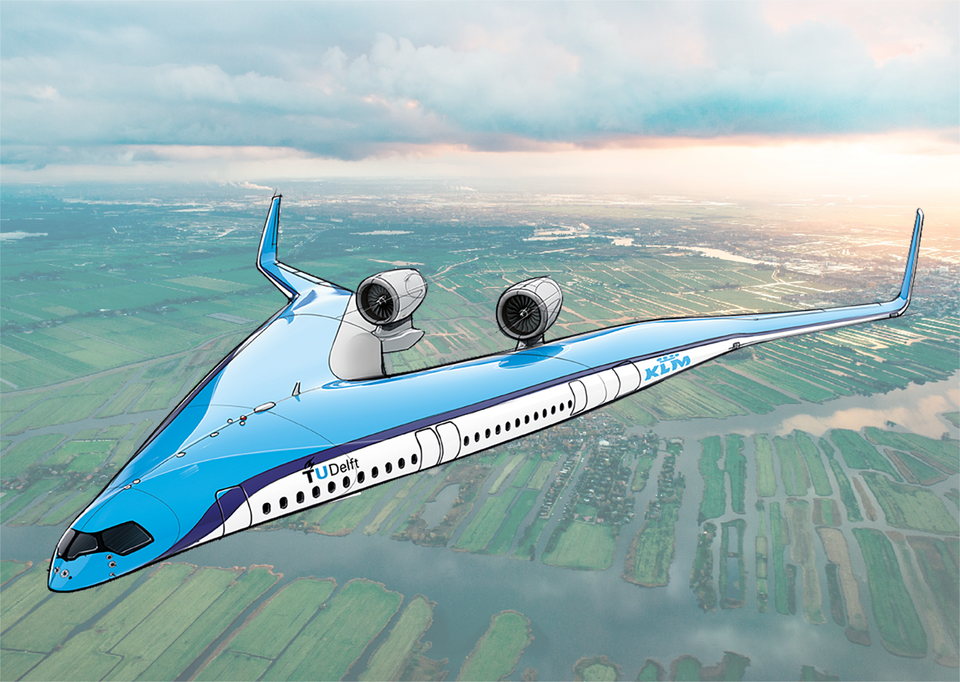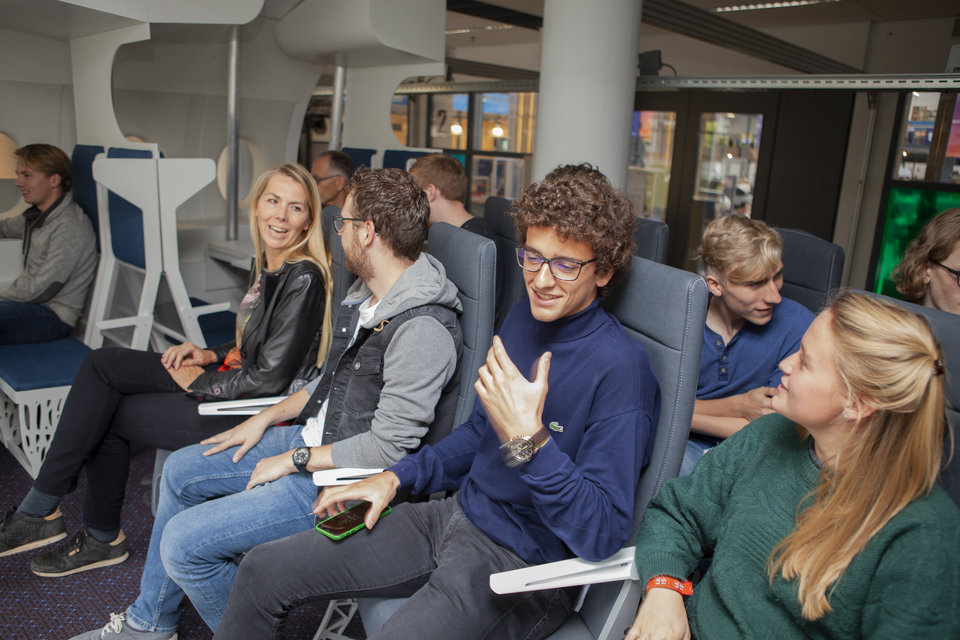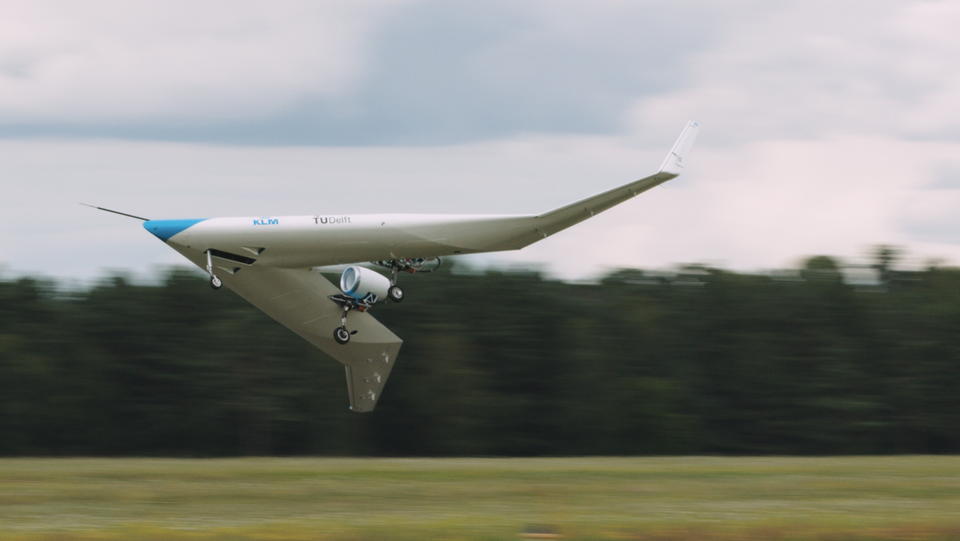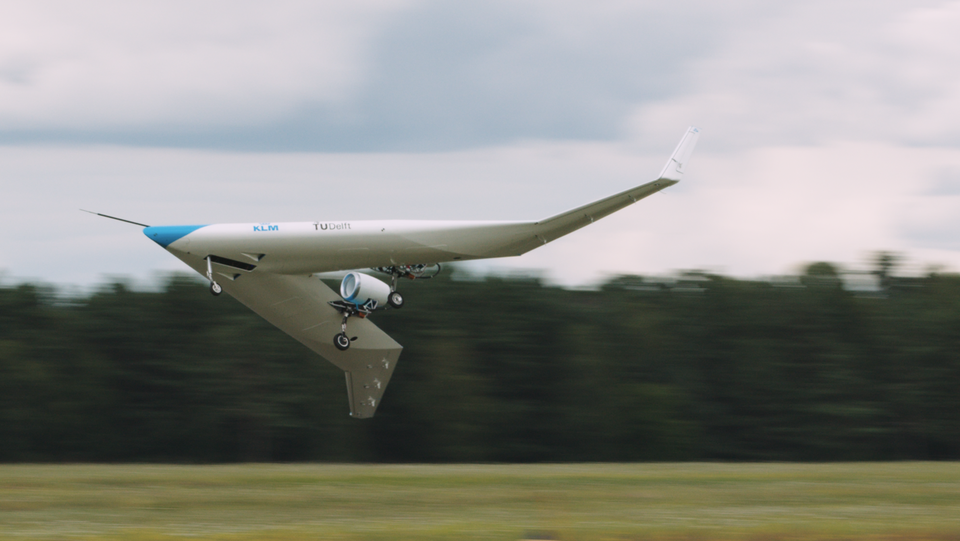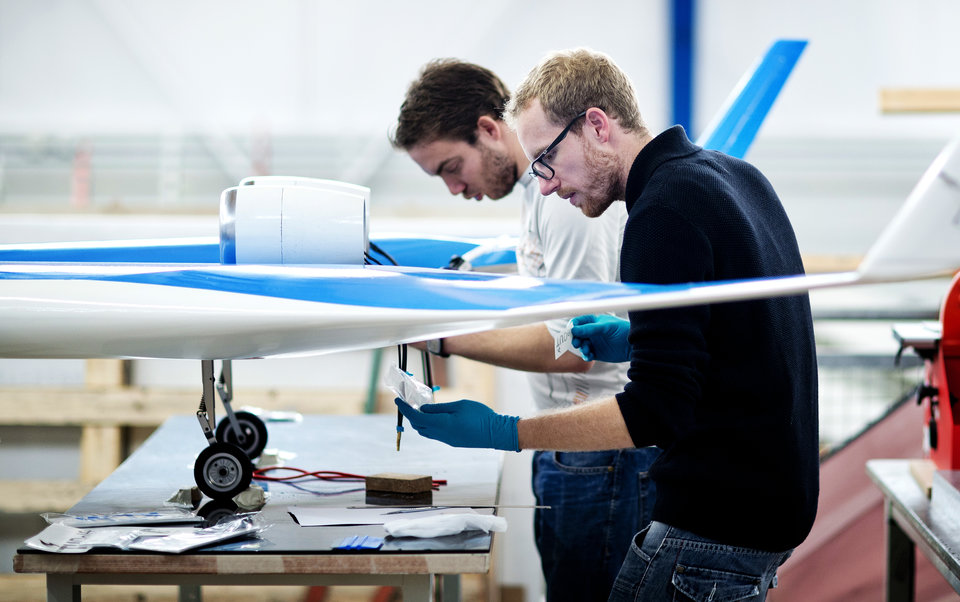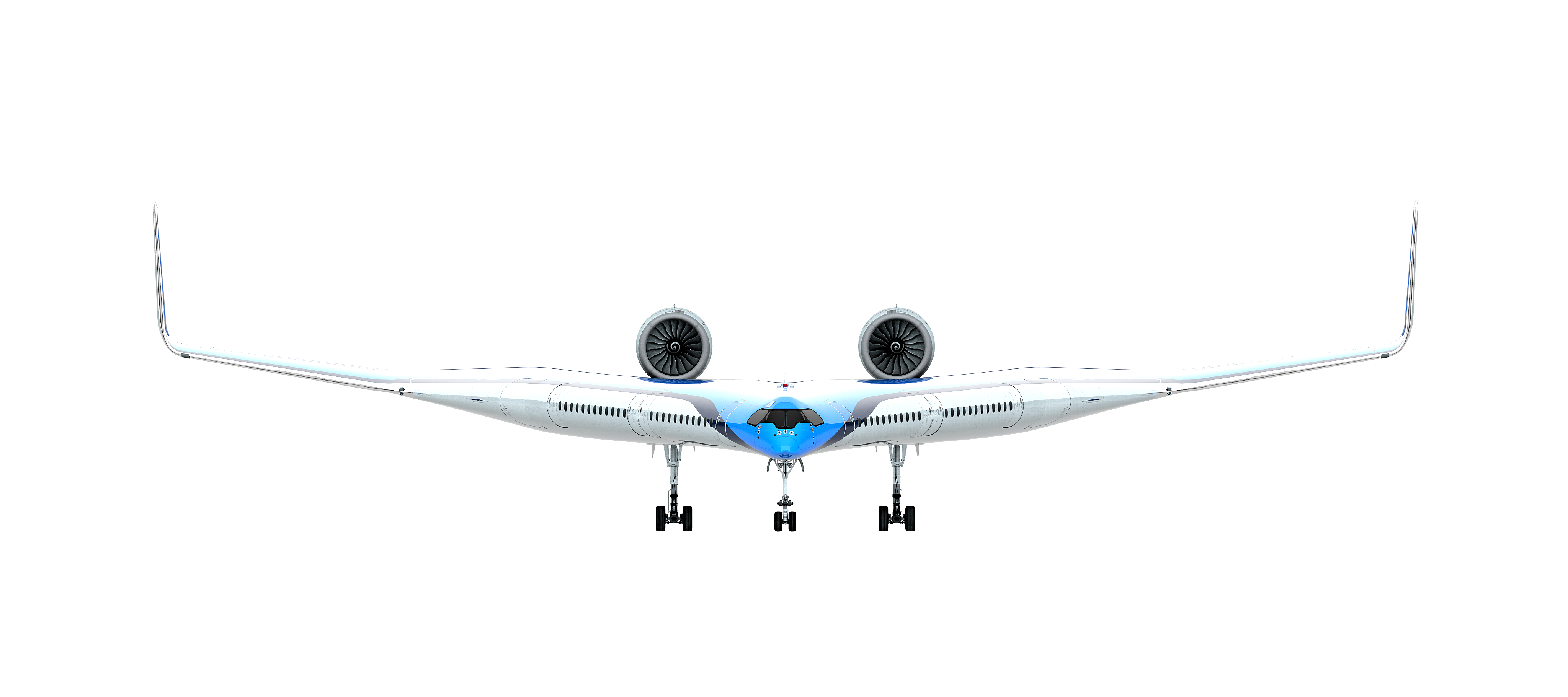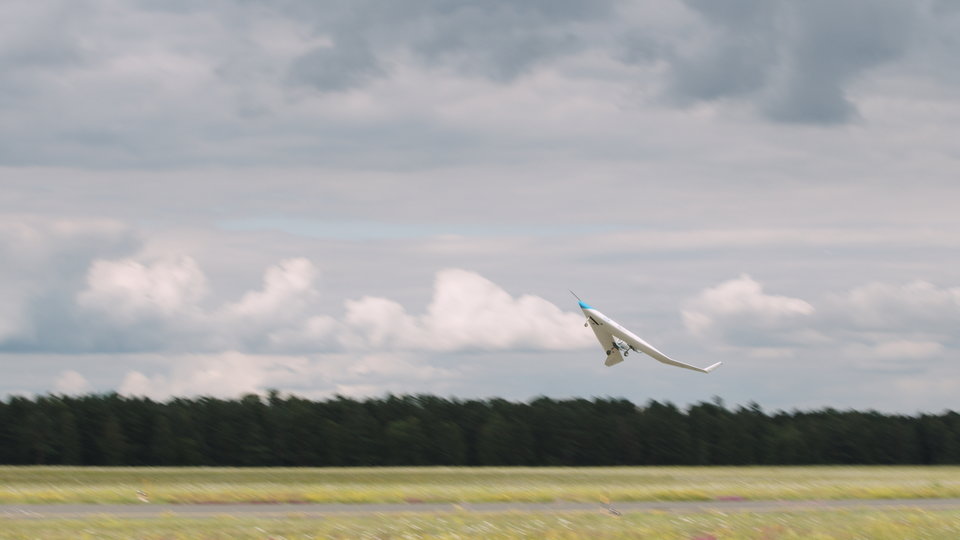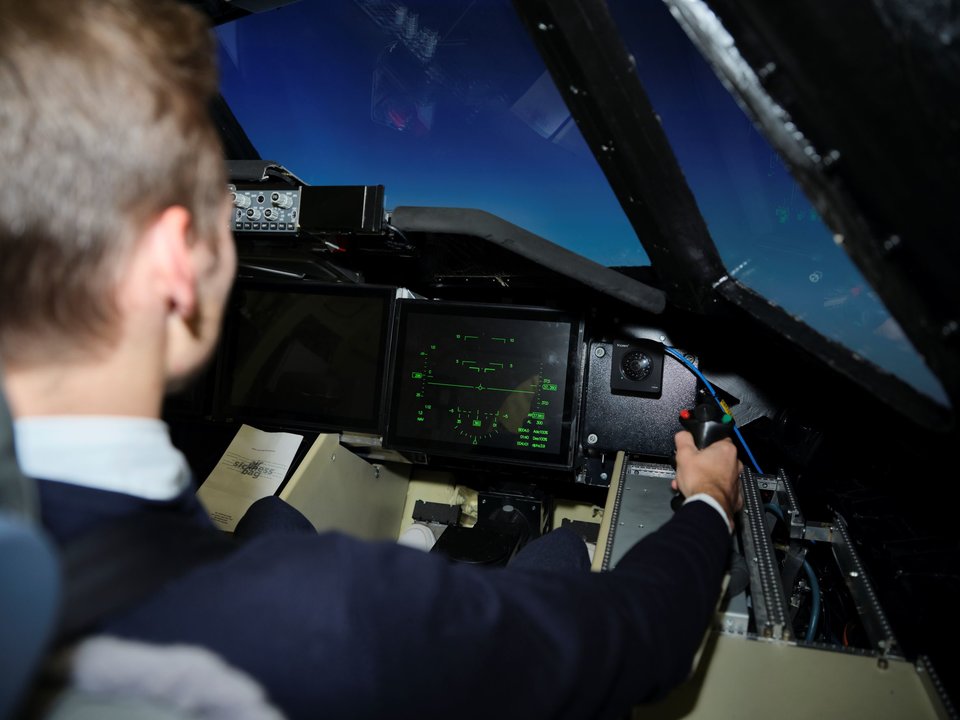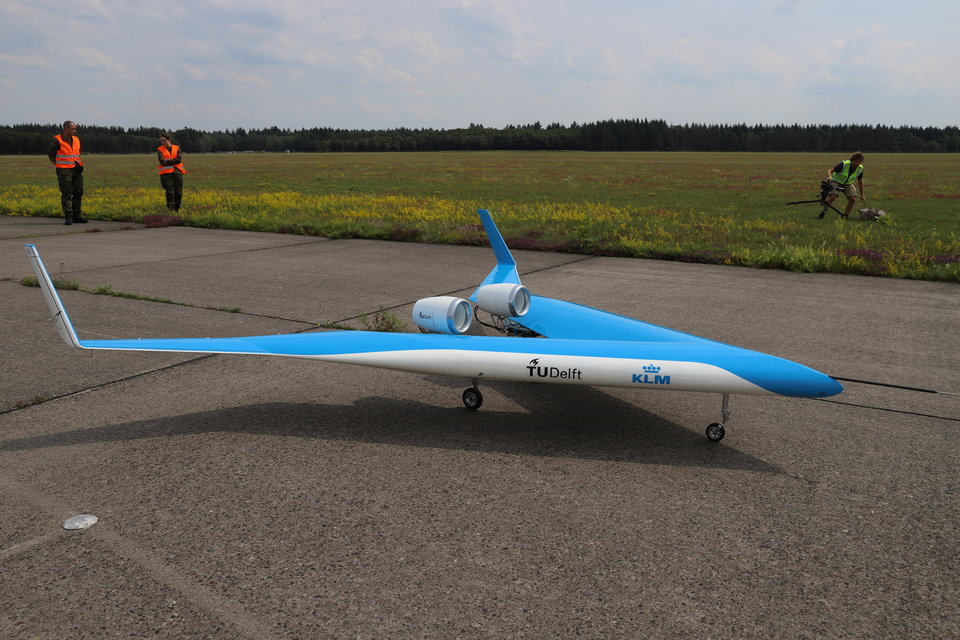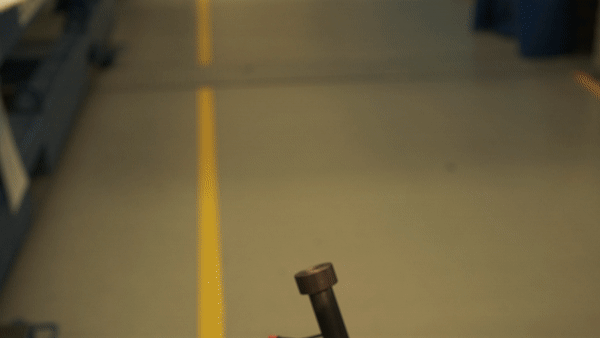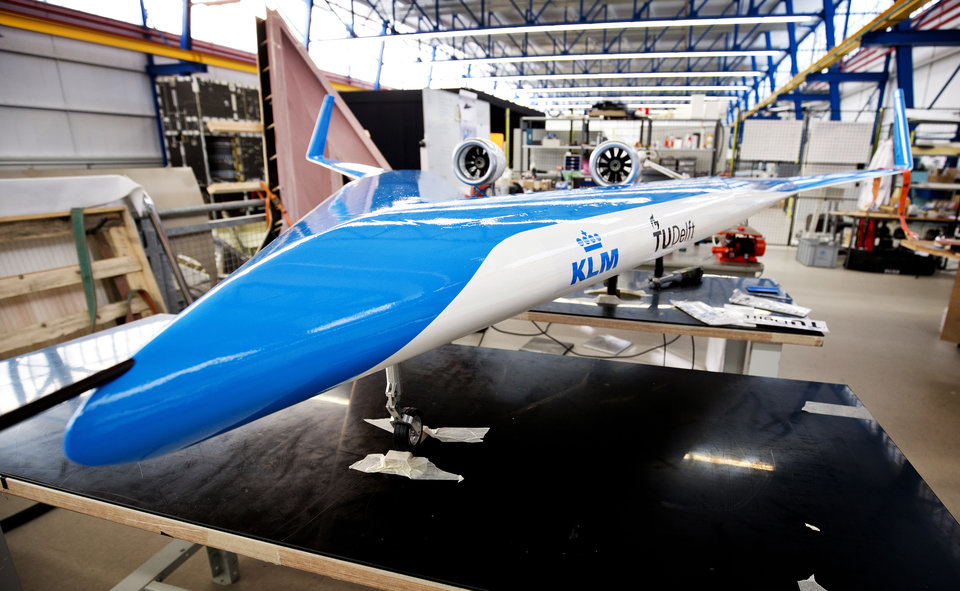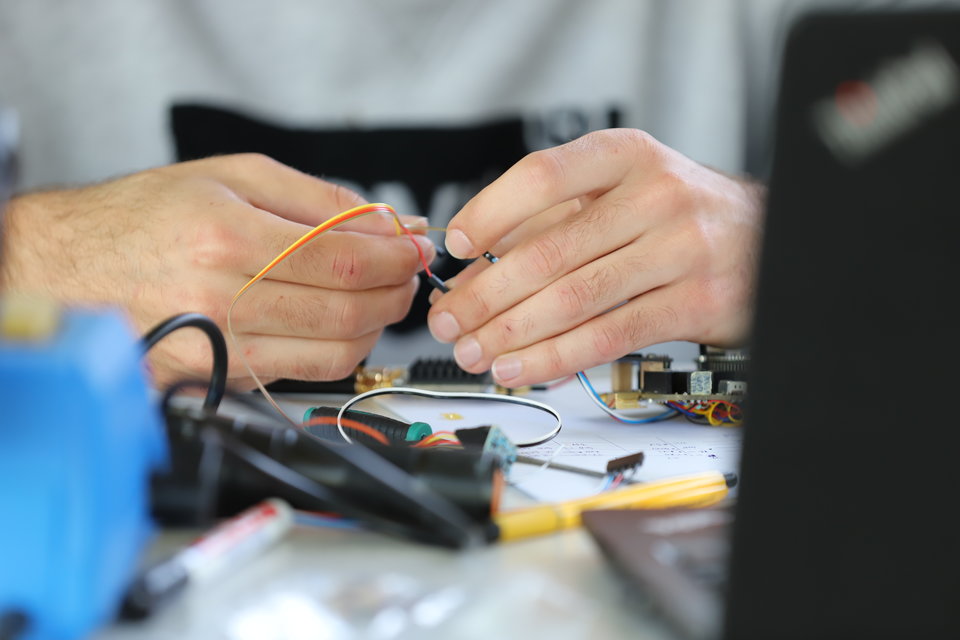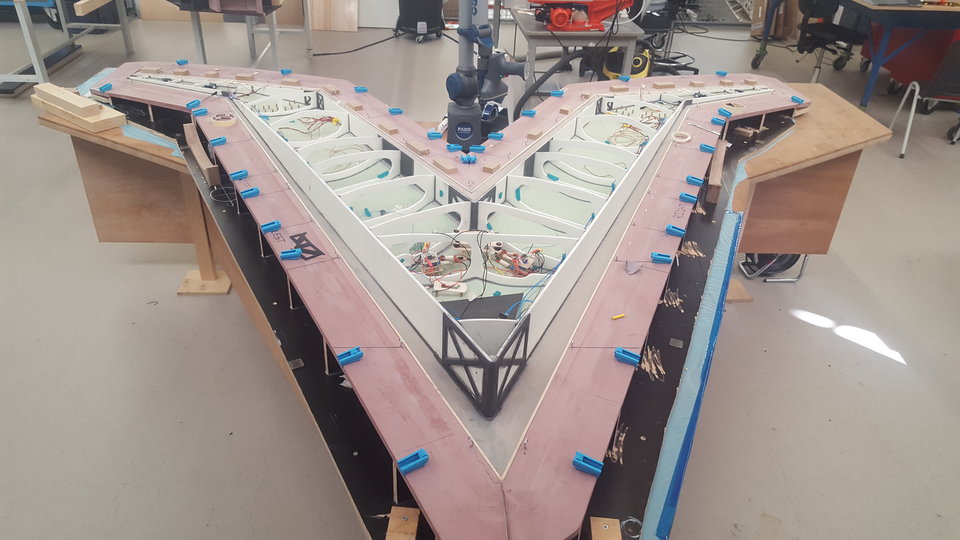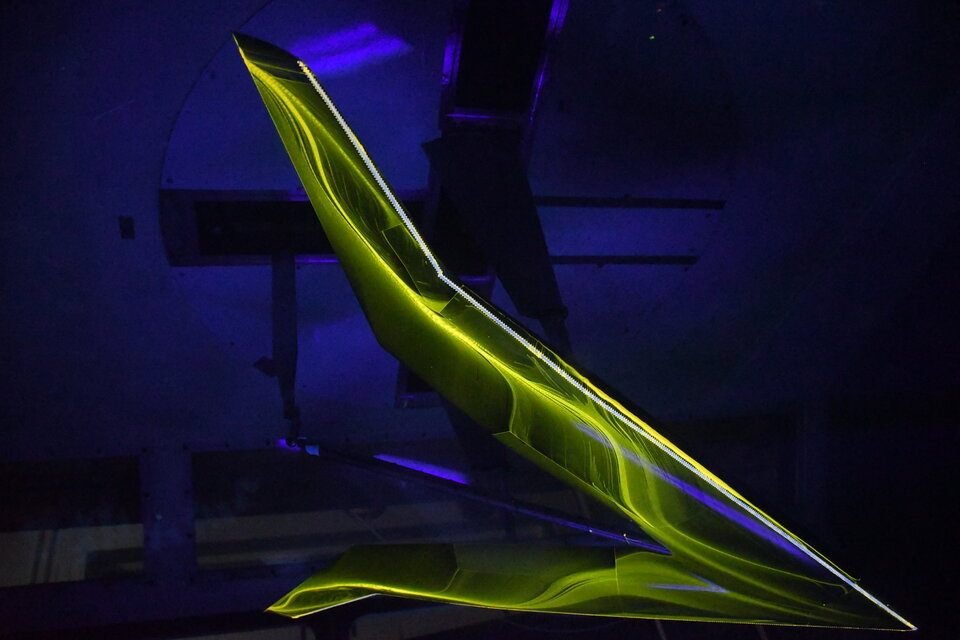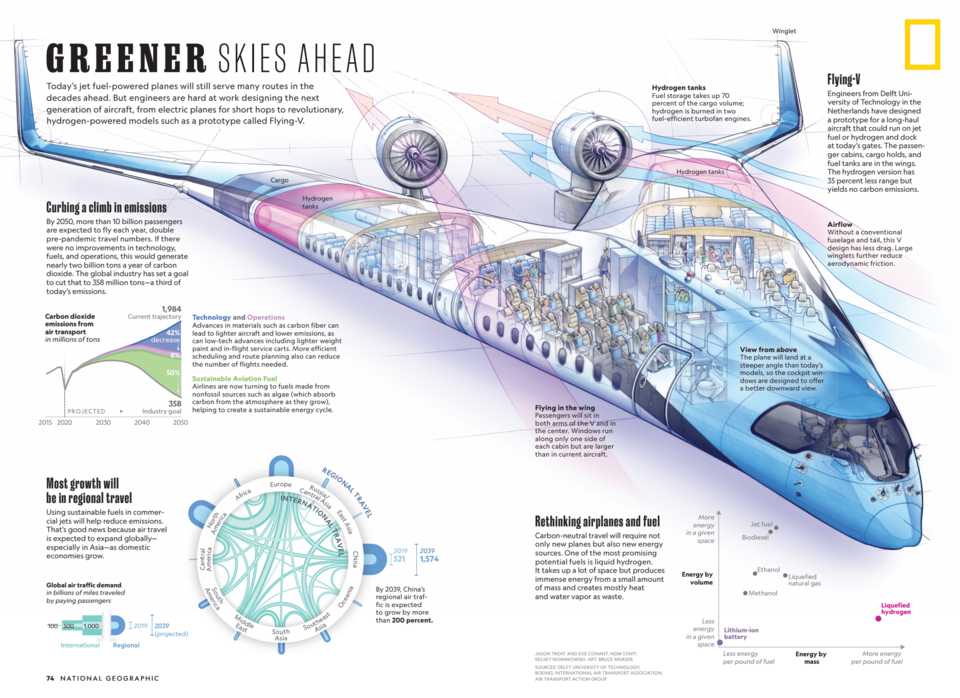The Flying-V
In the Flying-V – originally an idea of Justus Benad during his thesis project at Airbus Hamburg – the passenger cabin, cargo hold and fuel tanks are integrated in its wing structure. The design is not as long as an Airbus A350-1000, but it has the same wing span. This allows the Flying-V to use the present infrastructure at airports, such as gates and runways. The Flying-V carries about the same number of passengers - 361 in the standard configuration – and the same amount of cargo, 160 m3. Project leader at TU Delft, Dr. Roelof Vos: “The Flying-V is smaller than the A350-1000 and has less inflow surface area compared to the available amount of volume. The result is less resistance. That means the Flying-V needs less fuel for the same distance.”
The Flying-V is a design for a highly energy-efficient long-distance aeroplane. The aircraft’s design integrates the passenger cabin, the cargo hold and the fuel tanks in the wings, creating a spectacular v-shape. Its improved aerodynamic shape and reduced weight will mean it uses 20% less fuel than the Airbus A350-1000, today’s most advanced aircraft.
Successful maiden flight for the TU Delft Flying-V
In the summer of 2020 the scaled flight model of the Flying-V completed a successful maiden flight. Read all the details about the flight test.
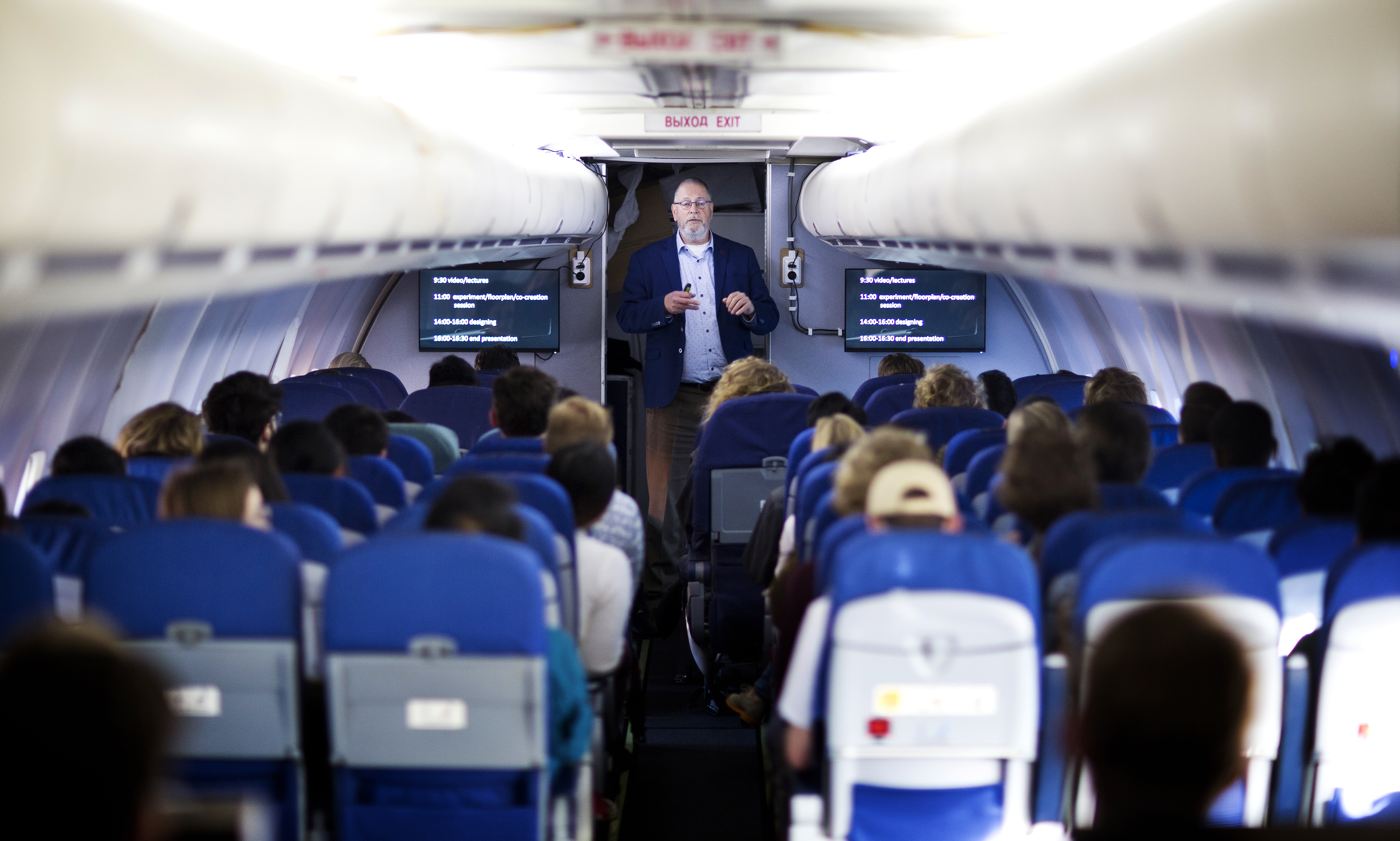
Stretching out in economy classProfessor of Applied Ergonomics and Design Peter Vink and industrial design engineer Thomas Rotte made the designs for the new, oval shaped cabin. The Flying-V can be fitted with a traditional cabin, but Vink and Rotte designed an experimental cabin that is lightweight, comfortable for passengers and that still holds the same number of passengers as an Airbus A350-1000. It contains four different seating options: lounge chairs, group seating, individual seats and collapsible beds. |
Dr.ir. Roelof Vos is the project leader of the Flying-V at the TU Delft, where the Flying-V Has been developed since 2016. As Associate Professor of the Faculty of Aerospace Engineering, Roelof Vos has been in charge of the Flying-V development projects at the TU Delft. The projects include studies conducted in the fields of overall aircraft and aerodynamic design, systems integration, control & stability, and more.
All publications can be found here.
Flying on sustainable energy
The Flying-V is one of TU Delft's lines of research into making aviation more sustainable. Dean Henri Henri Werij: "Ultimately, we have to fly entirely on sustainable energy. CO2-neutral. If CO2 is still released during the flight, for example because we then fly on synthetic kerosene, the same amount of CO2 will be used to produce those fuels. At Delft University of Technology, we are investigating how we are going to achieve this. For example, we are investigating new forms of propulsion, such as electric and electric hybrid, the climate impact of aviation and air traffic operations, such as airports.
More information:
About the aircraft design and scale model (Faculty of Aerospace Engineering):
Roelof Vos, researcher Flight Performance and Propulsion: +31 (0)15 278 5643
Ineke Boneschansker, press information: +31 (0)15 278 5361
Frequently asked (technical) questions about the Flying-V
About the cabin design and passenger experience (Faculty of Industrial Design Engineering):
Marc de Kool, press information: +31 (0)15 278 3723,
Press information TU Delft: +31 (0)15 278 9111.
